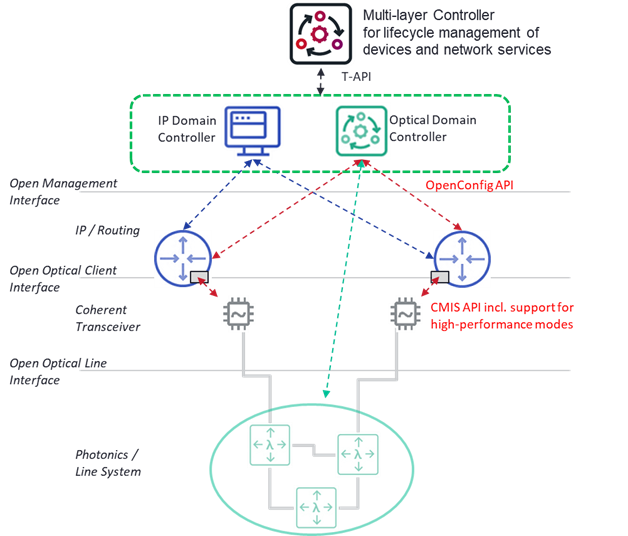Deploying coherent plugs – is there more to the story?
In a previous blog I outlined the first two steps for a straight-forward approach to getting started with coherent plug deployments. In brief, that approach was to leverage the best domain expertise: Have the optical team do the photonic services planning and the IP team provision the coherent plug based on the configuration information from that plan. And visibility of plugs by the optical team would allow for integrated optical troubleshooting workflows.
This approach will allow communications service providers (CSPs) to move forward with Coherent Routing deployments without re-architecting their network or operational models. It will allow any CSP to achieve deployment of coherent plugs with minimal effort and then decide for themselves if this is a model suitable for production at scale. For some operators, it may well be, but for others, it may leave some gaps that need to be closed, especially in the areas of:
- Manual hand-off of plug provisioning specs from the optical to the IP team, which leads to slower-than-desired deployments.
- Finger problems with provisioning that trigger either connectivity issues or, in the worst case, a risk to other in-service wavelengths across the photonic line system (depends upon the line system characteristics and how big the mistake is).
- Limited ability to optimize or plan the photonic infrastructure using the latest tools, including spectrum defragmentation etc., this could ultimately drive higher capex by triggering network over-builds sooner than necessary.
If one or more of the gaps above is important to scale the deployment of coherent plugs, there are solutions that, when implemented correctly, are also a ‘light lift’ relative to the value they can provide.
So what are the next steps in this approach?
Step 3: Automate the provisioning of coherent pluggables and photonic services
An automation solution using OpenConfig APIs (standard and available in most router platforms) will allow the planned optical solution to be taken right from the planning tool and pushed directly to the coherent plug in the router. This closes both the provisioning velocity and ‘finger problem’ gaps at one time. Although alternative open APIs could work, OpenConfig is the most widely accepted approach. There may be some minor tweaks required in the API since not all OpenConfig implementations allow access to all modes of operation in coherent plugs, especially the best-performing vendor-specific ones. The essential requirement is to leverage the plug-to-router Common Management Interface Specification (CMIS) API for plug provisioning. In general, automation of optical provisioning workflows is a great place to start and to work with the participating vendors to refine the solution to get exactly what is needed.

Figure: Multi-layer coordination and software control helps to optimize
Coherent Routing deployments
Step 4: Optimize the utilization of photonic infrastructure
Closure of the optimization gap would take the integrated plan of all the wavelength services on the photonic lines (wavelengths and lines are all in the same planning tool so this is easy to do) and put them through a spectrum defragmentation analysis once or twice a year. The output of that analysis can be automated and pushed to the hardware – both dedicated optical transponders as well as coherent plugs in routers – to re-color wavelengths and optimize spectrum availability. This step combines both the information available from the unified planning solution as well as the automation piece described previously to ensure a cost-effective and reliable photonic infrastructure.
There is not a one-size-fits-all approach to deploying coherent plugs. In some network deployments, it may not be worth the operational process investment to deploy coherent plugs. In other deployments, the automation solution described in this blog may only be a start and more comprehensive set of tools may be desired. However, for many CSPs, the four steps described in my two blog posts frame up a reasonable approach to getting started, understanding the trade-offs and making decisions about what is required to deploy a Coherent Routing solution at scale:
- Align the ownership of photonic services planning to a single team
- Integrate plug monitoring and troubleshooting into optical workflows
- Automate the provisioning of coherent pluggables and photonic services
- Optimize the utilization of photonic infrastructure
The key to success is to focus on the business objectives and the simplest possible set of technical requirements to meet those goals.








